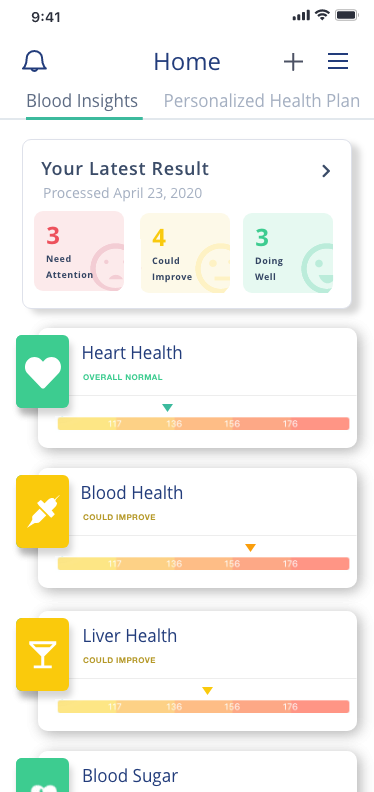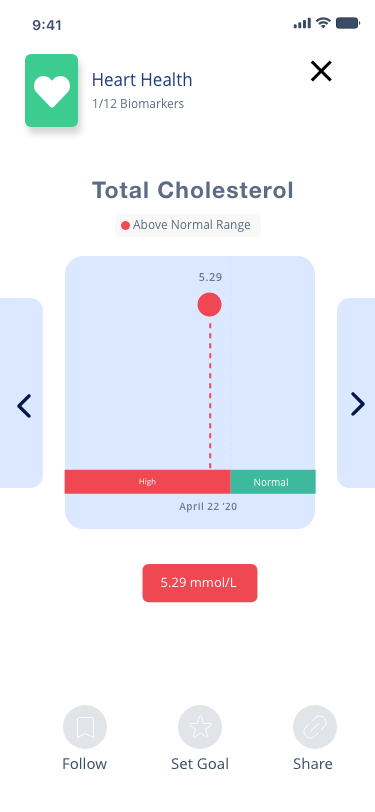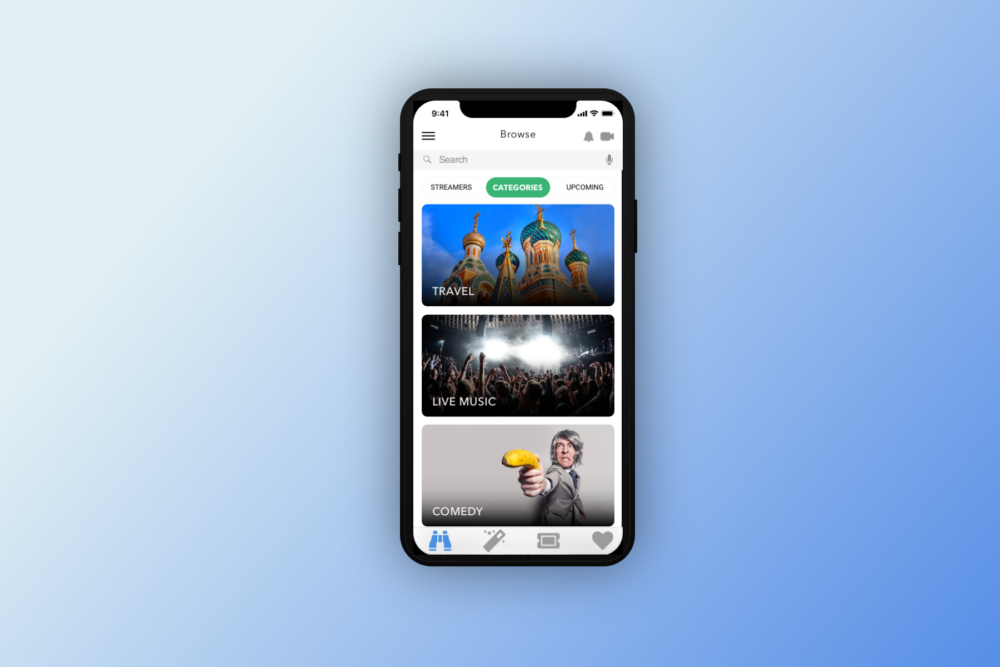I approached this product from a design thinking framework. After initial consultation with the client, we agreed that we needed to explore and validate assumptions with users. To briefly summarize the entire product process, we spent two weeks in customer discovery discussing with doctors, patients, and health concious people. We then proceeded to move into three iterative design sprints, each focusing on a key feature. In the following case study, I will share my process and insights as we explored our product experience.
My approach to understanding the competitive landscape was to focus on the problem they were solving, the value prop, target audience, and user feedback. For example, one other biomarker companies, known as InsideTracker, positioned themselves as a method to "rewind the clock". This company focuses on the problem of helping people find personalized research based health advice, and their main customers are high performing athletes. Furthermore, I explored articles, reviews, and feedback on each company. We found several key audiences to explore.
When prioritizing features, it's important to think of what are your must-have's? What are your nice-to-haves and what are your delighters? For us as a company there was going to be several basic features we needed to get traction in the blood biomarker space. But compared to our competitors, what segment of the market would we focus on? What core problem statement would drive our central vision?
For these more difficult questions, talking to people is needed. We began created the research prompts with our assumptions in mind. We had some guiding principles to why we thought this business was solving a need. But hearing them described by users in an open-ended setting, would give us early insight into our market.
We ended up interviewing eleven people: two Doctors, two Diabetic Patients, one cancer patient, and five proactively healthy people who regularly monitor their blood biomarkers.
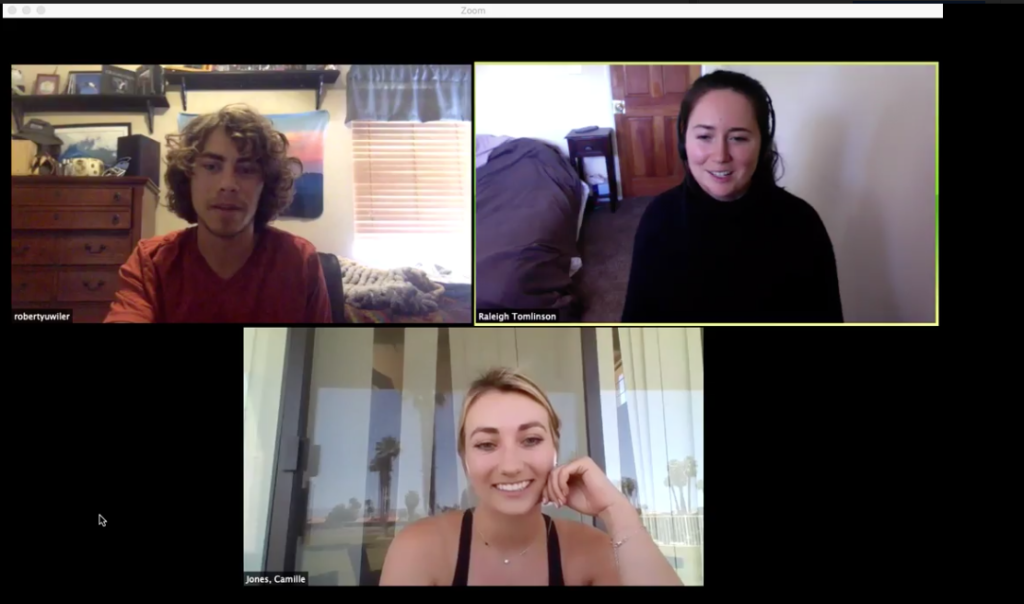


Through our interviews, we discovered a number of different voices. We met someone who had been building a database of what their optimal ranges would be over the last ten years. I understood that this level of effort meant there was a pain point present. We met a diabetes patient who said, "I don't really care about the full blood test. I've done it so many times, I know what I'm looking for." I understood that this person was less our target audience than originally thought. Diabetic patients have a clear idea of where they need to pay attention.
I then led a small Affinity Mapping activity with my primary stakeholders. During this activity, we listened to highlights from the interviews and captured quotes that stood out to us. This activity helps unify a team around a central vision, and find patterns together that ultimately tell the user story.
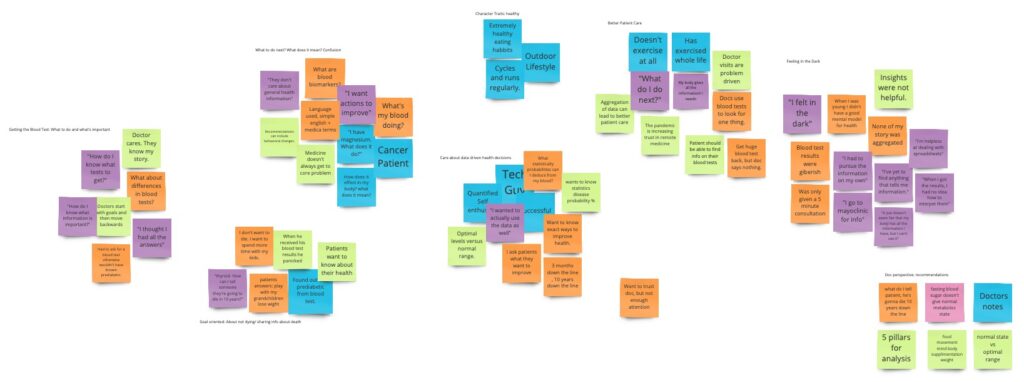


We knew we needed to help people get more complete and more human insights from their blood tests. This was an early value proposition. We decided that the marketing copy would evolve as long as we could understand how to solve this problem.
So I will share with you, our two defined target personas:
#1. A proactively healthy runner who loves tracking and wearibles. He really just wants to know more from his health, and getting blood data decoded would be so great.
#2 She is a bit sick and is fighting to be better. Diagnosed with cancer last fall, she feels like she's always at the doctor. Last time she was there, she wanted to ask about her blood test results but felt like too much of a burden to go through the whole report.
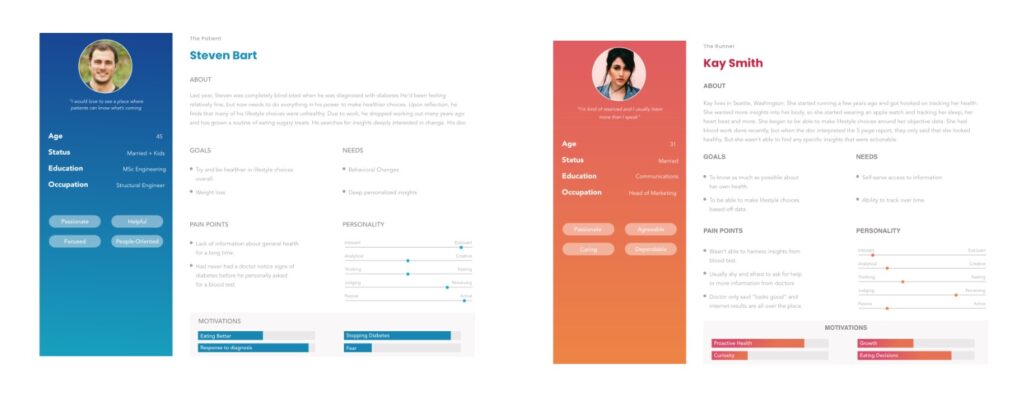


We based the early definition of the product on what our user journey would be. We knew that we wanted people to walk away from the experience saying, "I understand my blood test results. Now I am empowered to make personalized data-driven decisions about my health." How to get there? We placed some key must-have features in the journey and opened up space for brainstorming on the delighters in the product. What part of this experience will make people love this product? We need to find where we can create monumental value in peoples' lives.
Wireframing to me is all about focusing on the purpose without getting distracted by UI perfectionism. Our earliest version of the app was simply an outline with stickinotes, explaining our intentions and feature goals with each page. Here we began the steps of turning our value props and core experience into features. We outlined and began iterating on the product.
Beginning with the core must-have features, we began building screens. We were experimenting with how to best express a large amount of information in degestible and human ways. This first prototype had swipable categories of biomarkers. We wanted to offer users clear overviews yet also the ability to read more.
We tested if users understand the purpose of each page, users' ability to read and understand our information presented, and thier ability to move and navigate through the application. We found many points to improve upon. Our focus became clear. I wrote a report detailing demographics, goals, and recommendations.
Thank you for reading. This product is now being tested as an MVP. There's nothing like click through rates to get real validation for your product-market fit. I am using facebook bots in order to test the core experience and deepen our insight into what messaging resonates and who our users really are. Below is a video of creating facebook bots.
